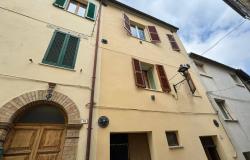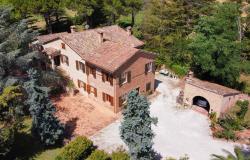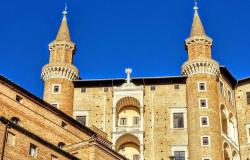 One of Italy's loveliest Renaissance buildings is taking a step into the future, adding a series of ''electronic frescoes'' to its extensive art collection.
One of Italy's loveliest Renaissance buildings is taking a step into the future, adding a series of ''electronic frescoes'' to its extensive art collection.
The Palazzo Ducale in the central Italian town of Urbino will host a series of moving projections created by the electronic designer Paolo Buroni, who has worked on similar projects around the world.
Four rooms in the 15th-century complex are being converted into blank canvasses for the large-scale screening of photographs, artworks and reconstructions, accompanied by music and soundtracks of daily life.
The idea is to carry visitors back six centuries in time, treating them to a realistic experience of the palace when it was home to renowned Renaissance rulers.
Opening on December 1, the project electronically ''transports'' surviving artworks back to the space they once occupied on the palace walls, while a particularly ambitious plan brings the famous library back to life.
The three-dimensional digital reconstruction is the result of years of experimentation and research.
The library was commissioned by the palace's first owner, Urbino's ruler, the famous soldier and commander Federigo da Montefeltre.
In its heyday, the library rivalled that of Oxford University's Bodleian and was the largest in Italy after that of the Vatican, which absorbed its contents three centuries ago.
As of spring 2008, the Hall of Frescoes will host an electronic re-creation of a series of lost wall paintings entitled ''Uomini d'Arme'' (Men of Arms), painted in the 15th century by Giovanni Boccati.
The project is the final stage in ten years of investments aimed at renovating and preserving the palace's architecture and improving its exhibition spaces.
The high spot of most visits to Urbino, the Palazzo Ducale is a listed UNESCO World Heritage Site.
Built in the middle of the 15th century by Federigo Da Montefeltro, who was also a huge architecture enthusiast, it swallowed the Palace of the Jole that stood on the site previously.
It is famous as the setting of a series of conversations that supposedly took place there in 1507, which appeared in the ''Book of the Courtier'' by renowned Renaissance author and courtier, Baldassare Castiglione.
It is considered one of the finest buildings of the Renaissance and plays host to the Galleria Nazionale delle Marche, home to some magnificent paintings.
These include Piero della Francesca's Flagellation of Christ, Paolo Uccello's Profanation of the Host and a portrait of Federico Da Montefeltro by Spanish artist Pedro Berruguete.











